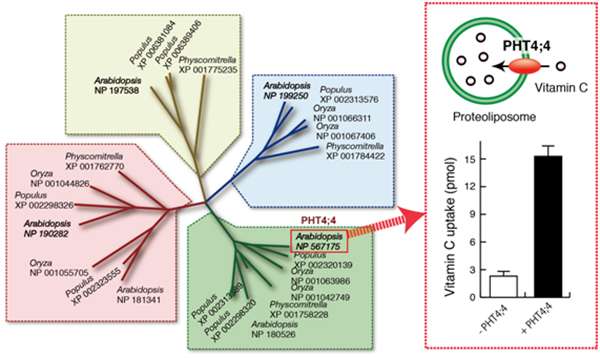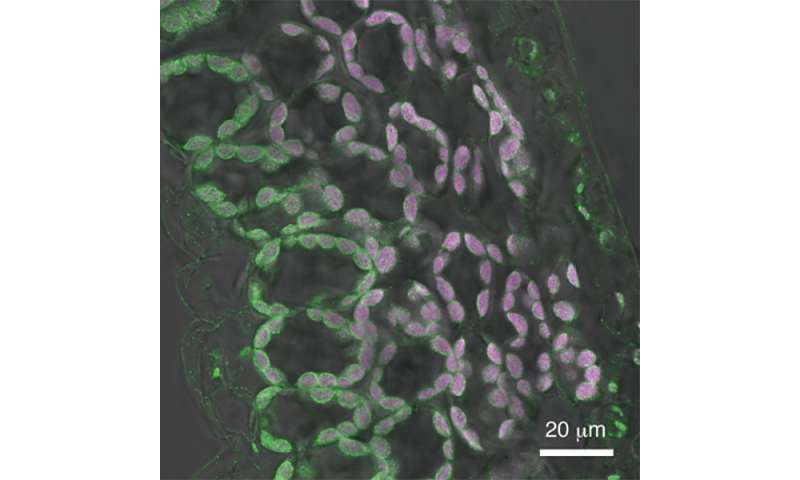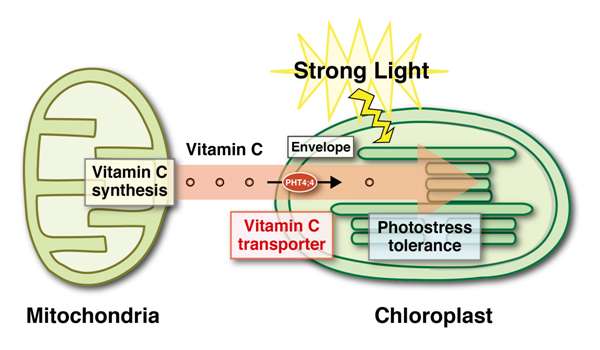High vitamin C levels are required to overcome photo-inhibition in plants

Vitamin C (ascorbate) is an antioxidant and coenzyme for a number of metabolic reactions in living organisms. In plant chloroplasts, high vitamin C levels are required to overcome photo-inhibition caused by strong light.
Although vitamin C is synthesized in the mitochondria, the molecular mechanisms underlying vitamin C transport into chloroplasts are poorly understood.
Now, Takaaki Miyaji, Yoshinori Moriyama, and Jian Feng Ma at Okayama University, together with Takashi Kuromori at RIKEN and colleagues, have shown that AtPHT4;4, a member of the phosphate transporter 4 family of Arabidopsis thaliana, functions as a vitamin C transporter.
The team found that proteoliposomes containing purified AtPHT4;4 protein exhibited membrane potential (ΔΨ)- and Cl—dependent vitamin C uptake (Fig. 1). AtPHT4;4 protein was expressed abundantly in the chloroplast envelope membranes (Fig. 2). Knocking out AtPHT4;4 resulted in decreased levels of vitamin C in the chloroplasts. The heat dissipation process of excessive energy during photosynthesis also decreased in the mutants.
These results indicate that AtPHT4;4 protein is a vitamin C transporter at the envelope membranes of chloroplasts, which is required for tolerance to strong light stress (Fig. 3). This is the first report regarding the identification of a vitamin C transporter in plants.
This research could help guide the development of heritable transporter genetic modification technology, which may provide a means of developing photo-inhibition tolerant plants.
-

Figure 2. AtPHT4;4 is abundantly expressed in the envelope membranes of chloroplasts from the leaves of Arabidopsis. The fluorescence signals of AtPHT4;4 and chlorophyll are shown in green and magenta, respectively. -

Figure 3. The mechasism of vitamin C transport in chloroplast. Upon strong light, the PHT4;4 at the envelope membranes takes up vitamin C from mitochondria, which is required for photostress tolerance.
More information: "AtPHT4;4 is a chloroplast-localized ascorbate transporter in Arabidopsis." Nature Communications 6, Article number: 5928 DOI: 10.1038/ncomms6928
Journal information: Nature Communications
Provided by Okayama University



















